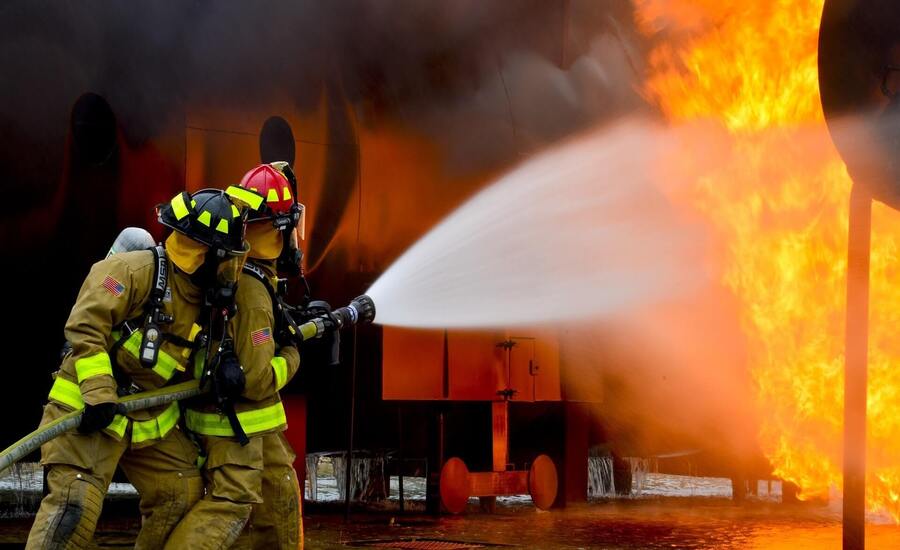Why You Should Invest in a Fire Station Alerting System: Primary Reasons
In a fire station, various software systems are implemented to boost overall efficiency. The main purpose of these systems is to improve the response time of firefighters, ensuring they can reach the incident site and control fire promptly. A fire station alerting system is among the most effective software tools implemented in the station.
However, the high upfront cost may make it hard for you to invest in a robust alerting system. Going through the reasons why investing in a fire station alerting system is a smart and integral move will make it easy for you to invest in it. Let’s explore these reasons without further ado.
8 Reasons You Should Invest in a Fire Station Alerting System
You should invest in a fire station alerting system because it:
1. Improves Response Time
It is designed to reduce the time it takes for firefighters to respond to an emergency. Unlike traditional methods, a fire station alerting system automates the notification process. It mitigates the risk of human error and ensures that alerts are transmitted instantly. This automation leads to quicker mobilization of the team, allowing firefighters to arrive at the incident site faster.
2. Integrates With Existing Systems
A modern alerting system can smoothly integrate with the existing systems or infrastructure of the fire stations. It can synchronize with dispatch systems, communication tools, and other emergency management software to provide a unified platform. This integration ensures that all systems collaborate, preventing the risk of miscommunications and delays. As a result, the overall efficiency and effectiveness of emergency responses are enhanced.
3. Provides Real-Time Update
One of the primary reasons to invest in a robust alerting system is that it provides real-time updates. It analyzes the incident site and provides relevant information to firefighters. This information enables them to understand the situation better. As a result, they plan and respond to fire emergencies in the best possible way. Moreover, real-time updates enable them to change their strategies according to the situation.
4. Enhances Coordination
In a fire station, different teams work collaboratively to control fires. Implementing a robust fire station alerting system enhances coordination among teams to enhance the overall performance of the station. It serves as a centralized system that notifies all teams about an emergency at once. Moreover, it displays the information about the incident site that all teams can analyze. As a result, they can collaborate and respond to any emergency efficiently.
5. Reduces Risk of Communication Failure
Communication failures during emergencies can risk the safety of the response team at the incident site. Traditional alerting methods often rely on outdated technologies that are prone to failure. On the other hand, a fire station alerting system uses advanced technology to reduce the risk of communication breakdowns. It provides clear, direct, and fail-safe communication channels, ensuring all team members receive the same information simultaneously. It mitigates the risk of miscommunication and its consequences.
6. Alerts All Relevant Teams
A fire station isn’t limited to firefighters only. Various other teams also work there, contributing to controlling emergency fires. However, all these teams can work efficiently when they receive alerts. A fire station alerting system notify all relevant teams about an emergency. As a result, they can collaborate to immediately respond to the emergency.
7. Supports Informed Decision Making
Firefighters cannot enter a building on fire without planning anything. They need to make informed decisions to eliminate fire efficiently and without risking safety. An Alert system plays a crucial role in this. It provides information about the incident site. It tells if any hazardous material is present inside that can risk their safety. As a result, firefighters develop a suitable plan to control it.
8. Facilitates Post Incident Analysis
The job of a fire station alerting isn’t completed after the fire is extinguished. It facilitates post-incident analysis as well. This analysis includes reports about the performance of the response team. Going through these reports will help you identify the areas of improvement. This analysis enables you to focus on improving the performance of firefighters and other relevant teams.
The aforementioned reasons highlight that an alerting system is a crucial part of any fire station and it’s worth investing in it. Therefore, you should never hesitate to invest in this robust software system.






